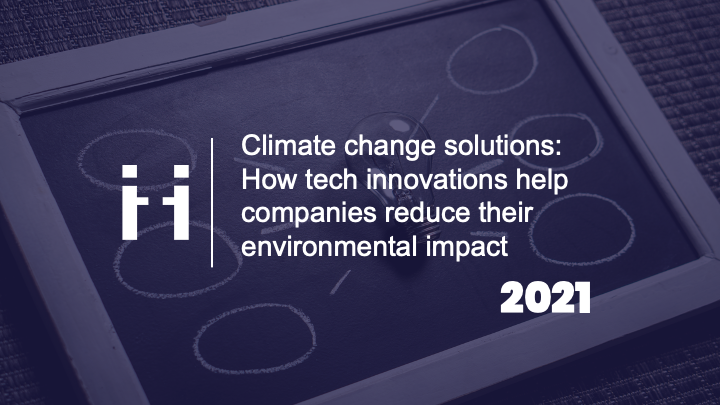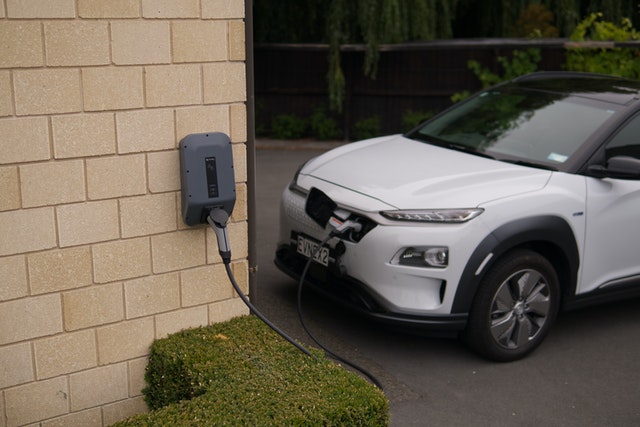
Share this article
Share this article
Sustainable development is a fundamental break that’s going to reshuffle the entire deck. There are companies today that are going to dominate in the future simply because they understand that.
Francois-Henri Pinault Tweet
As the Earth’s temperature rises, climate change has negative consequences for humans and the ecosystem. Increased greenhouse gas (GHG) concentrations have a significant negative impact, the repercussions of which can already be seen all around us. This article discusses different climate change solutions that your company could adopt in order to reduce its environmental impact.

1. Melting ice caps and rising sea levels
The ocean heats as the temperature rises, causing glaciers and polar ice shields to melt. As a result, sea levels rise, posing a hazard to low-lying coastal areas and increasing flooding.
2. Negative effects on human health
In several places of the world, there has been an upsurge in heat-related mortality. Furthermore, there is a greater risk of disease transmission through water.
3. Loss of wildlife
Increased carbon dioxide levels would have negative consequences on wildlife. Due to the limited adaptation of flora and wildlife, there would be a loss of biodiversity.
4. Economic and societal costs
The economic and societal costs of loss of life and property are significant. Climate change has a significant impact on agriculture, tourism, fisheries, and energy.
5. Effects on the Global South
Climate change will have the greatest impact on developing countries. Crop losses will result from shifting rainfall patterns and significant temperature swings, stifling attempts to alleviate hunger and poverty.

By reducing greenhouse gas emissions, optimizing operations, reducing waste, and building resistance systems to climate-related natural disasters, digital technology can aid in the fight against climate change. Increased automation and efficiency in the agriculture, manufacturing, and energy industries could prove to be pivotal climate change solutions in the fight against global warming.
The following are interesting tech-based climate change solutions that could pave the way towards a greener future.
1. Shift to renewable energy sources
Traditional fossil-fuel-fueled power plants are unsustainable because they have large carbon footprints that contribute to global warming. Renewable energy sources create energy without emitting CO2. Furthermore, thanks to technological advancements in solar panels and wind turbines, renewable energy sources can now be exploited more efficiently. The next generation of technological advancements, on the other hand, will be fuelled by the development of efficient and cost-effective batteries to store electricity that can be used when there is no sun or wind to power the turbines.
2. Carbon capture and storage technologies
Even after the transition to renewable energies and a low-carbon energy system, massive volumes of greenhouse gases will still be present in the atmosphere. Carbon capture and storage (CUSS) is a method of capturing carbon dioxide emissions, compressing them into a liquid, and then storing them deep underground so that they do not contribute to climate change. Alternatively, CO2 captured in the atmosphere can be used in industrial processes such as concrete manufacture.
3. Process and operations improvements
Automation, artificial intelligence, and digitization of operations would aid in the improvement of processes, the reduction of waste and energy consumption, and the efficient use of resources. The integration of new energy-efficient digital technology into manufacturing systems has the potential to reduce global emissions by 15%.
To address the climate challenges in the future, governments, individuals, and corporations will need to work together and take collective action. The United Nations’ Sustainable Development Goals (SDGs) and the formation of new technological groups hint at more collaboration towards the adoption of new climate change solutions.
Both policymakers and consumers are increasingly concerned about global warming and environmental challenges. A key component of the Paris Climate Agreement is a severe reduction in carbon emissions to avoid a rise in world average temperature of more than 2°C. How can your company reduce its emissions while saving money, given the legislative and societal trend toward decreasing emissions?

When fossil fuels like petroleum, coal, and natural gas are burned, large amounts of carbon dioxide (CO2) are released into the atmosphere. These emissions arise from a variety of sources, including transportation, building, and manufacturing. When CO2 is released into the atmosphere, it acts as a greenhouse, preventing heat from exiting the earth’s atmosphere. CO2 and comparable gases are referred to as “greenhouse gases” because of this “greenhouse effect.”
The greenhouse effect heats the atmosphere to a point where it has an impact on our global climate. Increased heat could melt the polar ice caps, causing sea levels to rise. They can also produce catastrophic weather events like wildfires and excessive temperatures. Because of these dangers, it is critical to minimize carbon emissions.
Businesses must consider adopting climate change solutions to reduce their CO2 emissions.
1. Green buildings
Building “green buildings” is the most effective technique to minimize carbon emissions. Green buildings are constructed to a standard that produces fewer greenhouse emissions and is more environmentally friendly than typical building methods. Companies can differentiate themselves from competitors and earn a higher profit by building to a green standard such as LEED or EDGE.
2. Purchase carbon offsets
Carbon offsets could be purchased by companies that emit a lot of carbon as a short-term solution. Carbon offsets are a growing business in which a firm with high carbon emissions purchases carbon credits from a company that is carbon negative.
3. Renewable energy
Remote video assistance solutions are a cost-effective option to substantially reduce your company’s carbon emissions. By decreasing the need to send professionals to the job site, ViiBE’s remote assistance solutions save money on fuel. Its expert call routing connects the caller with the relevant expert for the job swiftly and easily. ViiBE’s solution enables technicians to instantly communicate images and paperwork of any issues they encounter, as well as use a laser pointer remotely to aid them in solving on-site problems autonomously.
The harmful influence of human actions on the environment is becoming more widely recognized in today’s society. Individuals know that man-made pollution, fast industrialisation, urbanization, and increased carbon emissions are all contributing to environmental degradation.
Companies today strive to reduce their greenhouse gas emissions for numerous reasons.
Firstly, customers are expecting businesses to take on more accountability. Customers feel that businesses must minimize their environmental impact and address climate change. Customers are more inclined to abandon firms that do not adhere to ethical and environmental standards.
Secondly, investors are also looking for better results in terms of Environmental, Social, and Governance (ESG) ratings. Furthermore, with the support of public scrutiny, activist shareholders can influence crucial managerial choices.
Lastly, businesses that implement effective sustainability methods and reduce their carbon footprint can significantly reduce their costs.

Businesses and governments would have to take far-reaching actions to mitigate the effects of climate change. According to the Intergovernmental Panel on Climate Change, extraordinary changes are required to meet the 2016 Paris Agreement’s goals of limiting global warming to 1.5 degrees Celsius. To reach net-zero emissions by 2050, carbon dioxide (CO2) emissions would have to drop by 45 percent from 2010 levels by 2030.

Businesses can reduce their greenhouse gas emissions by adopting a combination of different climate change solutions.
1. Avoiding carbon emissions
Businesses could reduce carbon emissions by streamlining their operations. Companies and governments are starting to phase out fossil fuels in favor of natural gas and renewable energy. In the United States, for example, Illinois is preparing to ban coal-fired power plants. In metropolitan areas, electric cars and other electric vehicles could help to improve air quality. AI and other smart technology would help to cut waste and increase energy efficiency even more.
2. Offsetting for carbon emissions
Reforestation operations can help companies offset carbon emissions because forests operate as natural carbon sinks, absorbing excess carbon dioxide.
3. Re-using carbon emissions
Materials can be reused by companies during the manufacturing process. When compared to using newly manufactured raw materials, reusing resources consumes less energy. Organizations can also create business models that re-use, recycle, and repair products to mitigate their impact.
The repercussions of climate change are extremely likely to be the next global shock. Businesses are becoming more aware of the need to invest in risk mitigation strategies in order to avoid future negative consequences. Green and sustainable enterprises that propose innovative climate change solutions are expected to drive the next wave of transformation as well.